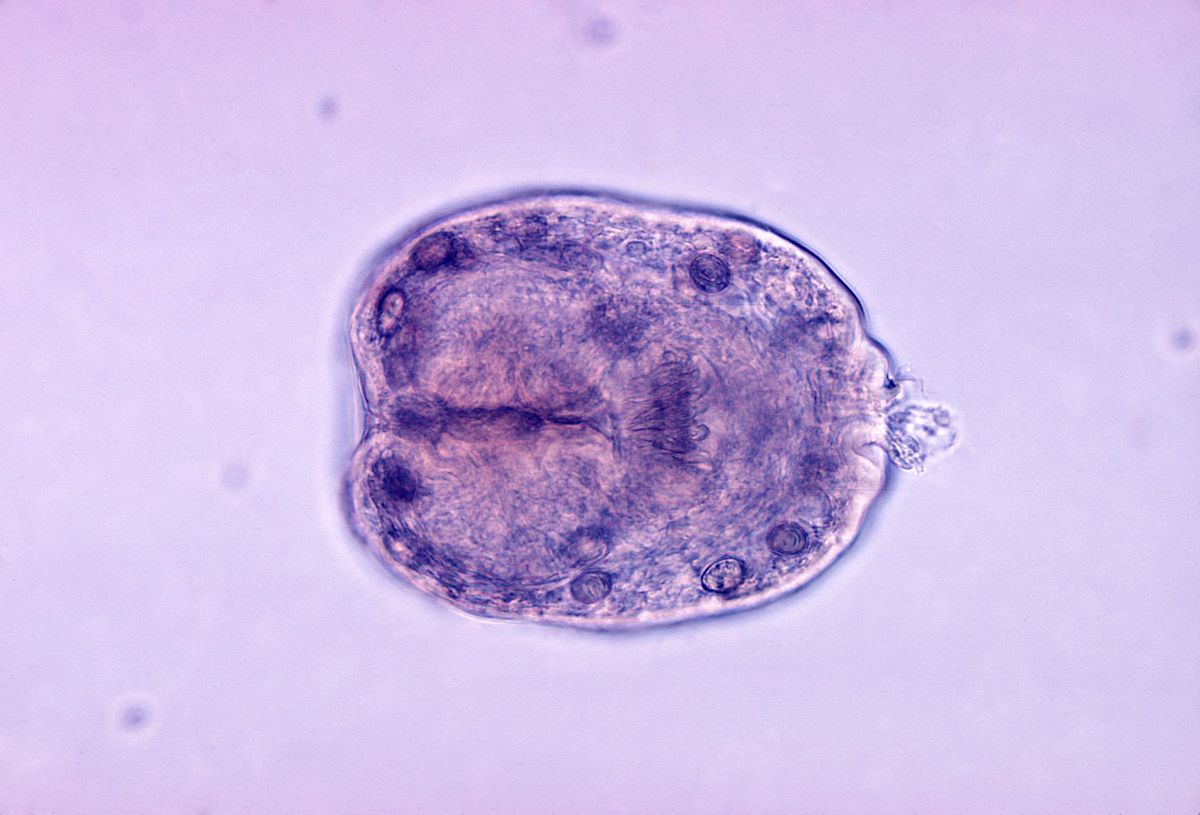
Echinococcosis, also known as hydatid disease, is a parasitic infection caused by tapeworms of the genus Echinococcus. This disease primarily affects the liver and lungs but can spread to other organs. Humans typically contract it through contact with infected animals or consuming contaminated food or water. While rare in many parts of the world, it remains a significant health issue in regions where livestock farming is prevalent. Symptoms can vary widely, from mild discomfort to severe organ dysfunction, depending on the cyst's location and size. Early diagnosis and treatment are crucial for managing this condition effectively. Understanding the facts about echinococcosis can help in prevention, early detection, and treatment, making it essential knowledge for those in affected areas.
What is Echinococcosis?
Echinococcosis, also known as hydatid disease, is a parasitic infection caused by tapeworms of the genus Echinococcus. This disease affects both humans and animals, leading to serious health issues if not treated promptly. Here are some fascinating facts about echinococcosis:
-
Echinococcosis is caused by tapeworms. The primary culprits are Echinococcus granulosus and Echinococcus multilocularis.
-
There are two main types of echinococcosis. These are cystic echinococcosis (CE) and alveolar echinococcosis (AE).
-
Dogs are primary hosts. Dogs and other canines are the definitive hosts for Echinococcus granulosus.
-
Humans are accidental hosts. Humans can become infected by ingesting eggs from contaminated food, water, or soil.
-
Sheep and cattle are intermediate hosts. These animals often harbor the larval stages of the parasite.
Symptoms and Diagnosis
Recognizing the symptoms and diagnosing echinococcosis early can be life-saving. The disease can remain asymptomatic for years, making it tricky to detect.
-
Symptoms vary by type. CE often causes cysts in the liver and lungs, while AE affects the liver more aggressively.
-
Common symptoms include pain and discomfort. Abdominal pain, nausea, and vomiting are frequent complaints.
-
Jaundice can occur. This happens when cysts obstruct bile ducts.
-
Imaging techniques are crucial. Ultrasound, CT scans, and MRI are used to detect cysts.
-
Serological tests help confirm diagnosis. Blood tests can detect antibodies against the parasite.
Treatment Options
Effective treatment is essential to manage echinococcosis and prevent complications. Various approaches are used depending on the type and severity of the infection.
-
Surgery is often required. Removing cysts surgically is a common treatment for CE.
-
Albendazole is a key medication. This antiparasitic drug is used to treat both CE and AE.
-
PAIR technique is an alternative. Puncture, Aspiration, Injection, and Re-aspiration (PAIR) is a less invasive method for treating cysts.
-
Long-term medication may be needed. AE often requires prolonged treatment with antiparasitic drugs.
-
Liver transplantation is a last resort. In severe AE cases, liver transplantation might be necessary.
Prevention and Control
Preventing echinococcosis involves controlling the spread of the parasite and educating at-risk populations.
-
Regular deworming of dogs is crucial. This helps reduce the spread of Echinococcus eggs.
-
Proper disposal of animal offal is important. Infected organs should be disposed of safely to prevent transmission.
-
Hand hygiene is essential. Washing hands after handling animals or soil can prevent infection.
-
Public education campaigns are effective. Raising awareness in endemic areas helps reduce infection rates.
-
Vaccination of livestock is being explored. Research is ongoing to develop vaccines for intermediate hosts.
Global Impact
Echinococcosis is a significant public health issue in many parts of the world, particularly in rural and farming communities.
-
Endemic in many regions. The disease is prevalent in parts of South America, Africa, Asia, and the Mediterranean.
-
Economic burden is high. Treating and managing echinococcosis can be costly for affected communities.
-
Livestock losses are substantial. Infected animals often have reduced productivity and may die prematurely.
-
Human cases are underreported. Many cases go undiagnosed, especially in remote areas.
-
International cooperation is needed. Combating echinococcosis requires global efforts and resources.
Interesting Facts
Here are some lesser-known but intriguing facts about echinococcosis that highlight the complexity and impact of this disease.
-
Echinococcus eggs are resilient. They can survive in the environment for months.
-
Wildlife plays a role. Foxes, wolves, and other wild canines can spread the parasite.
-
Ancient disease. Echinococcosis has been affecting humans for thousands of years.
-
Zoonotic disease. This means it can be transmitted from animals to humans.
-
Hydatid cysts can grow large. Some cysts can reach the size of a grapefruit.
-
Silent killer. The disease can remain asymptomatic for years before causing severe health issues.
-
Complex life cycle. The parasite's life cycle involves multiple hosts and stages.
-
Research is ongoing. Scientists are continually studying echinococcosis to develop better treatments and preventive measures.
Final Thoughts on Echinococcosis
Echinococcosis, caused by tapeworms, is a serious condition affecting both humans and animals. Understanding its transmission, symptoms, and treatment options is crucial for prevention and management. Regular deworming of pets, proper hygiene, and avoiding contact with infected animals can significantly reduce the risk. Early diagnosis and treatment are vital to prevent severe complications. Public awareness and education play a key role in controlling the spread of this disease. By staying informed and taking preventive measures, we can protect ourselves and our furry friends from this potentially life-threatening condition. Stay vigilant, practice good hygiene, and consult healthcare professionals if you suspect an infection. Knowledge and proactive steps are our best defense against echinococcosis.
Was this page helpful?
Our commitment to delivering trustworthy and engaging content is at the heart of what we do. Each fact on our site is contributed by real users like you, bringing a wealth of diverse insights and information. To ensure the highest standards of accuracy and reliability, our dedicated editors meticulously review each submission. This process guarantees that the facts we share are not only fascinating but also credible. Trust in our commitment to quality and authenticity as you explore and learn with us.
